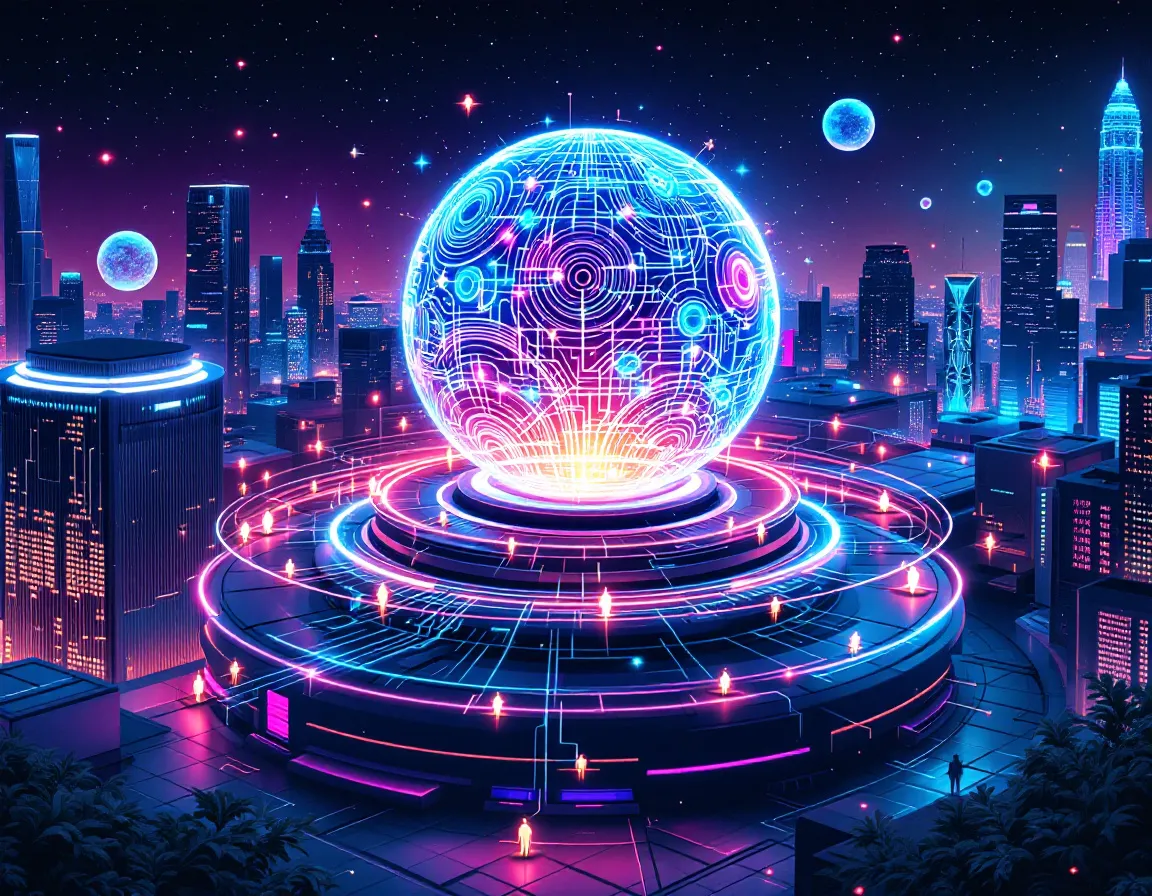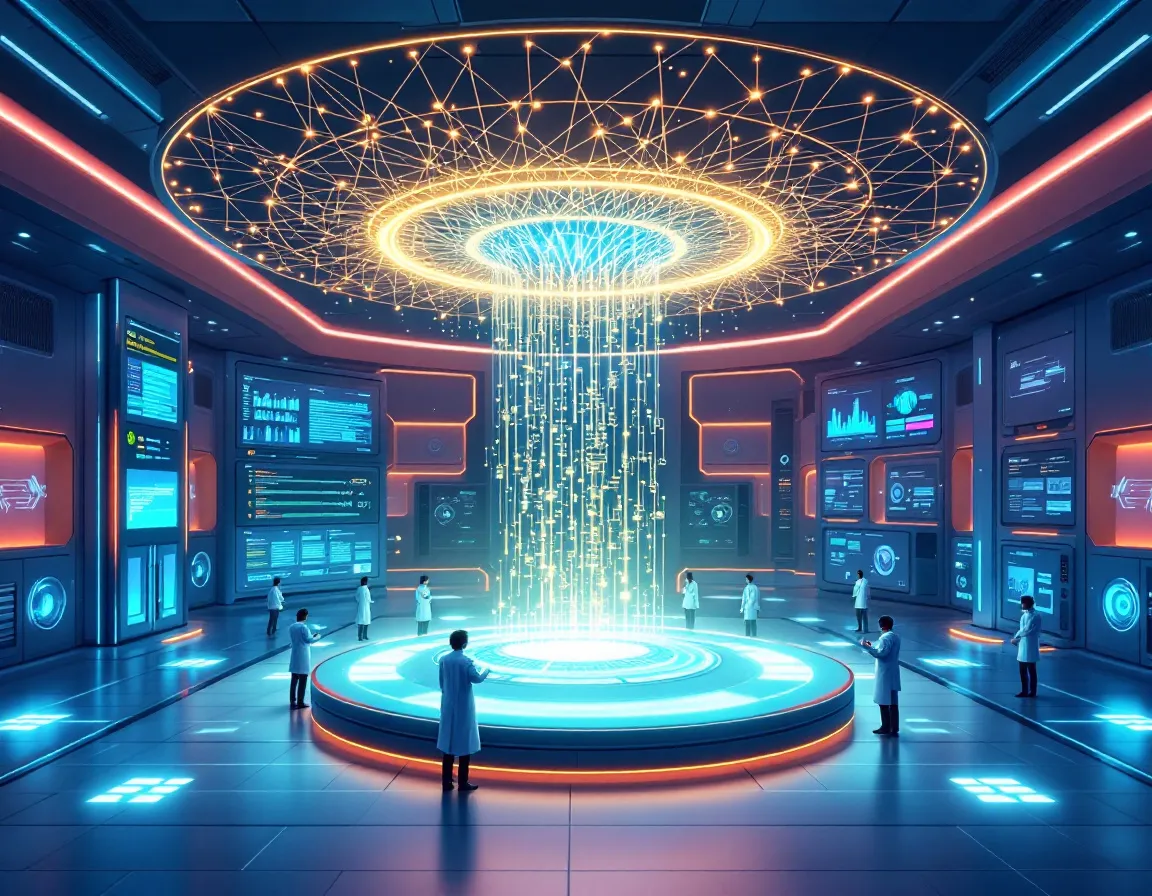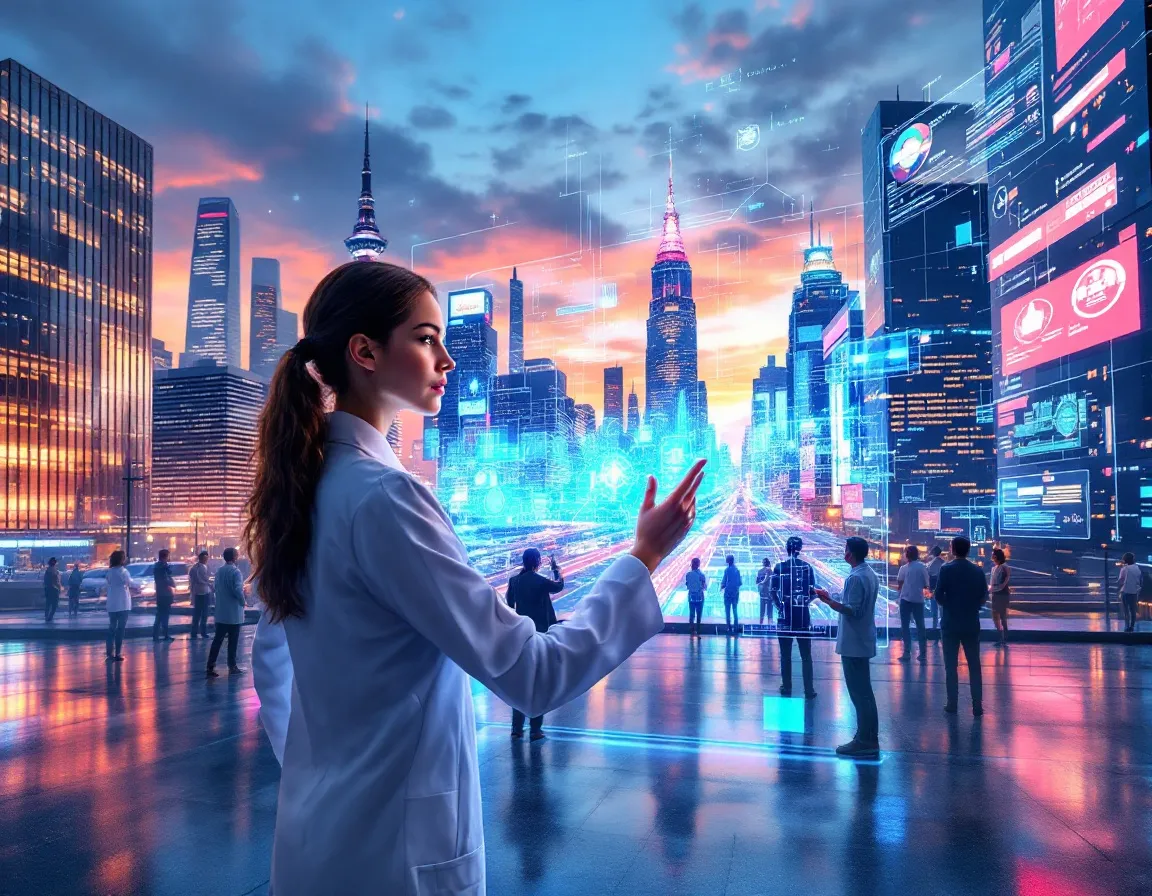
Personalization Engine: A Guide to Boosting Customer Loyalty
A personalization engine represents the cornerstone of modern digital experience platforms, combining advanced data analytics, machine learning, and content delivery systems to create uniquely tailored user experiences. These sophisticated systems process vast amounts of customer data in real-time, enabling businesses to deliver highly relevant content, products, and services to each individual user. Learn more about AI video editing to enhance your content delivery.
Understanding Personalization Engines
Comprehensive Definition
At its core, a personalization engine is an integrated software system that collects, analyzes, and acts upon user data to deliver customized digital experiences. Unlike traditional content management systems, these engines employ artificial intelligence and machine learning algorithms to continuously adapt and improve their recommendations based on user behavior patterns. Discover how mastering Instagram can benefit from personalization engines.
The evolution of personalization technology has transformed from simple rule-based systems to sophisticated AI-powered platforms. Today’s personalization engine solutions can process multiple data points simultaneously, making split-second decisions about content delivery across various channels.
Core Components
Modern personalization engines consist of four essential components:
- Data Collection Systems: Real-time user behavior tracking and historical data aggregation
- Processing Infrastructure: AI and machine learning algorithms for data analysis
- Decision Engine: Rules and logic for content selection and delivery
- Delivery Mechanism: Content distribution across multiple channels
The Technology Behind Personalization Engines

Data Processing Architecture
The foundation of any effective personalization engine lies in its data processing capabilities. Real-time data processing enables immediate response to user actions, while historical data analysis provides context for long-term behavioral patterns. These systems typically process:
- Behavioral data (clicks, page views, time on site)
- Demographic information
- Transaction history
- Device and location data
AI and Machine Learning Integration
Machine learning personalization represents a significant advancement in how these systems operate. Neural networks and deep learning algorithms analyze complex patterns in user behavior, enabling more accurate predictions and recommendations. Natural Language Processing (NLP) capabilities allow personalization engines to understand and respond to user intent more effectively. Explore the optimal TikTok quality for better user engagement.
Integration Capabilities
A robust website personalization engine must seamlessly integrate with existing business systems. This includes:
- CRM platforms
- E-commerce systems
- Content management systems
- Marketing automation tools
- Analytics platforms
Advanced Personalization Capabilities
Customer Journey Mapping
Leading personalization engine platforms excel at mapping and optimizing the customer journey. They track user interactions across multiple touchpoints, creating detailed profiles that inform personalization decisions. This capability enables businesses to:
- Identify critical conversion points
- Optimize user paths to purchase
- Reduce friction in the customer journey
- Improve overall user experience
Dynamic Content Optimization
AI personalized content delivery systems automatically optimize content based on user behavior and preferences. The content personalization engine continuously tests and refines content variations to maximize engagement and conversion rates. This includes:
- Automated A/B testing
- Dynamic content assembly
- Real-time content recommendations
- Personalized search results
Predictive Personalization
The personalisation engine leverages advanced predictive analytics to anticipate user needs and behaviors. This learning engine capability enables businesses to:
- Predict future purchase behavior
- Identify potential churn risks
- Recommend next-best actions
- Optimize customer lifetime value
Through these advanced capabilities, a personalization engine tool becomes an invaluable asset for businesses seeking to enhance customer engagement and drive conversion rates. The combination of AI-powered analytics, dynamic content delivery, and predictive capabilities creates a powerful system for delivering personalized experiences at scale.
In the next section, we’ll explore implementation strategies and organizational considerations for successfully deploying a personalization engine solution. For more insights, check out our guide on Amazon Vendor Central.
Integration Capabilities of Personalization Engines

A content personalization engine must seamlessly integrate with existing business systems and third-party platforms. Modern integration frameworks support various protocols and standards, ensuring compatibility with legacy systems while enabling future scalability.
API Frameworks and Connectivity
REST APIs and GraphQL endpoints facilitate data exchange between the personalization engine tool and other systems. These interfaces enable real-time data synchronization and support various authentication methods for secure communication.
Cross-Channel Synchronization
The personalisation engine coordinates experiences across multiple channels, ensuring consistency whether customers interact via web, mobile, email, or in-store touchpoints. This synchronization requires robust data pipelines and event processing systems.
Implementation Strategies
Technical Implementation
Successful deployment of a personalization engine solution requires careful planning and execution. Key considerations include:
- System architecture design and optimization
- Data migration and integration planning
- Performance monitoring and scaling strategies
- Security and compliance implementations
Organizational Readiness
The engine customer experience transformation requires organizational alignment and preparation. This includes:
- Team structure and responsibility definition
- Training programs for technical and business users
- Change management processes
- Governance framework establishment
Advanced Use Cases and Applications

E-commerce Personalization
The personalization engine for banks and e-commerce platforms delivers sophisticated capabilities including:
- Product recommendations based on browsing history
- Dynamic pricing optimization
- Inventory-aware product suggestions
- Abandoned cart recovery strategies
Content Personalization
Content personalization systems leverage personalisation technology to deliver:
- Dynamically assembled content based on user preferences
- Contextual recommendations across channels
- Personalized search results and navigation
- Adaptive learning experiences
As organizations continue to invest in personalization systems, the machine learning engine capabilities become increasingly sophisticated. Success requires careful attention to implementation strategy, organizational readiness, and ongoing optimization efforts. The next section will explore data privacy considerations and compliance requirements essential for responsible personalization deployment.
Best Practices for Personalization Engine Implementation
Implementing a personalization engine requires careful planning and execution to maximize its effectiveness. Organizations must follow established best practices to ensure their personalization engine delivers optimal results while maintaining data privacy and security standards.
Project Planning and Resource Allocation
Successful implementation starts with comprehensive project planning. This includes defining clear objectives, establishing timelines, and allocating necessary resources. Key considerations include:
- Technical infrastructure requirements
- Data migration strategies
- Integration with existing systems
- Staff training and development needs
Risk Management Strategies
Organizations must identify and mitigate potential risks associated with personalization engine deployment. Common risks include data security breaches, system integration failures, and user adoption challenges. Implementing robust risk management protocols helps ensure smooth implementation.
Real-World Success Stories with Personalization Engines

Leading organizations across industries have achieved remarkable results using personalization engines. These case studies demonstrate the transformative power of AI-driven personalization:
E-commerce Success Stories
Major retailers have reported significant improvements in key metrics after implementing personalization engines:
- Amazon: 35% increase in revenue through personalized recommendations
- Netflix: 75% of viewer activity influenced by personalized suggestions
- Spotify: 40% increase in user engagement through personalized playlists
Banking and Financial Services
The personalization engine for banks has revolutionized customer service and product offerings. Leading institutions report:
- 30% increase in product adoption rates
- 25% reduction in customer service costs
- 45% improvement in customer satisfaction scores
Future Trends in Personalization Technology
The evolution of personalisation technology continues to accelerate, driven by advances in artificial intelligence personalization and machine learning. Key trends include:
Edge Computing Integration
Edge computing enables faster processing of personalization data, reducing latency and improving real-time customization capabilities. This technology enhances the performance of website personalization engines and mobile applications. For more information, read about how personalization can boost customer loyalty.
Advanced AI Content Personalization
Machine learning personalization is becoming more sophisticated, with systems capable of:
- Predictive content curation
- Dynamic layout optimization
- Real-time sentiment analysis
- Automated content generation
Measuring Success and ROI
The effectiveness of a personalization engine solution must be measured against specific KPIs:
Key Performance Metrics
- Conversion rate improvements
- Average order value increases
- Customer lifetime value growth
- Engagement metrics enhancement
Continuous Optimization
The engine customer experience must be continuously refined through:
- A/B testing of personalization strategies
- User feedback analysis
- Performance monitoring
- Algorithm optimization
Steps to Effectively Implement Personalization Engines
Implementing a personalization engine can seem daunting, but with the right approach, businesses can reap the rewards of enhanced customer engagement and loyalty. Here’s a step-by-step guide to help you integrate personalization into your strategy effectively:
1. Understand Your Goals and Audience
Start by identifying the objectives you want to achieve with your personalization engine. Is it to improve customer loyalty personalization, drive sales, or enhance user engagement? Clearly defining your goals ensures you select the right solution tailored to your needs. Platforms like Braze personalization can help you streamline personalized messaging based on customer data.
2. Choose the Right Personalization Engine
Research and select a personalization engine solution that aligns with your business requirements. Look for features like scalability, integration capabilities, and advanced analytics. Consider exploring solutions that specialize in website personalization engines and content personalization engines, especially if your focus is delivering a seamless online experience.
3. Analyze and Segment Data
Effective personalization relies on robust data analysis. Use customer data to create detailed segments based on behavior, preferences, and demographics. A powerful personalisation engine can handle these data sets, offering valuable insights for precise targeting.
4. Integrate with Existing Systems
Ensure the personalization engine integrates smoothly with your existing CRM, email marketing platforms, and e-commerce systems. This reduces friction and allows for more cohesive operations. For international users, advanced personalisierung engines may offer multilingual capabilities to cater to diverse audiences.
5. Test Different Types of Personalization
Experiment with various personalization approaches, such as dynamic content, product recommendations, and predictive analysis. Explore types of personalization, including behavior-based targeting and real-time offers, to see what resonates most with your audience.
6. Monitor Performance and Optimize
Continuously track the performance of your personalization efforts using built-in analytics. Use metrics like click-through rates, conversion rates, and customer satisfaction to measure success. Solutions like Braze personalization offer detailed reporting to fine-tune campaigns and maximize impact.
Common Challenges and How to Overcome Them
- Integration Complexity: Ensure your team has the necessary expertise to handle technical setups. Many personalization engine solutions come with comprehensive support to assist in the process.
- Data Privacy Concerns: Stay compliant with regulations like GDPR and CCPA by using secure, privacy-focused tools.
- Content Overload: Avoid overwhelming users with irrelevant content. Focus on delivering highly targeted and curated experiences.
By incorporating these strategies, businesses can harness the power of personalization engines to deliver impactful customer experiences and achieve long-term success.
Conclusion: The Future of Personalization
The content personalization engine has become an essential tool for businesses seeking to deliver exceptional customer experiences. As personalization systems continue to evolve, organizations must stay current with emerging technologies and best practices. Explore the new rules of customer engagement for further insights.
Success in the personalization landscape requires:
- Commitment to continuous improvement
- Investment in the right technology stack
- Focus on data privacy and security
- Regular evaluation of performance metrics
Organizations that effectively leverage personalization engines while maintaining a strong focus on customer privacy and experience will be best positioned for success in the increasingly competitive digital marketplace. The future of personalization lies in the seamless integration of AI-designed engines, machine learning capabilities, and human expertise to create truly meaningful customer connections. For more on the future of personalization, visit McKinsey’s insights on personalization.
By following the guidelines and best practices outlined in this guide, organizations can harness the full potential of their personalization engine to drive growth, improve customer satisfaction, and achieve sustainable competitive advantage in their respective markets.
Check out ProductScope AI Answer Generator (get 200 free studio credits)
